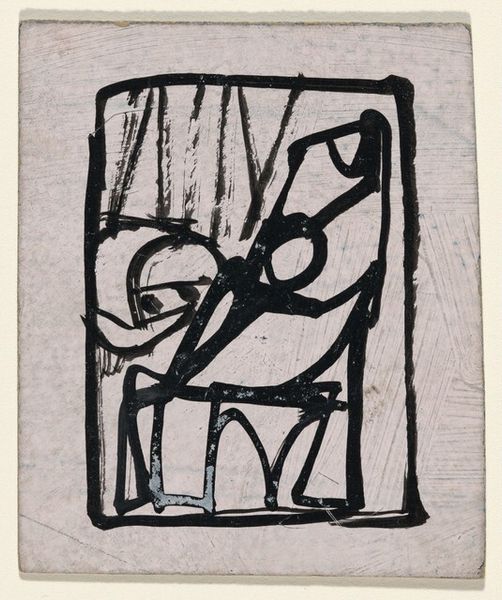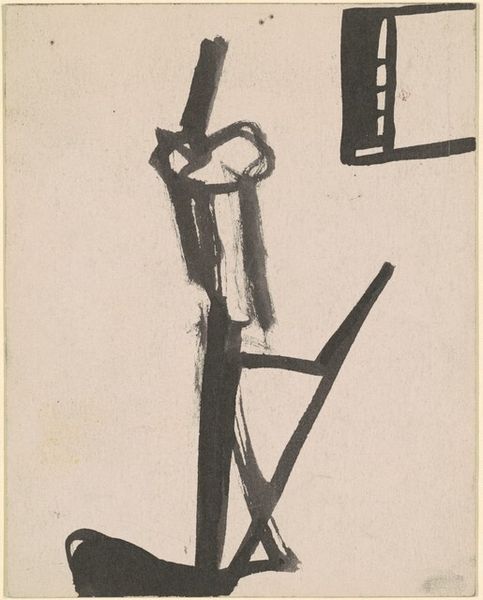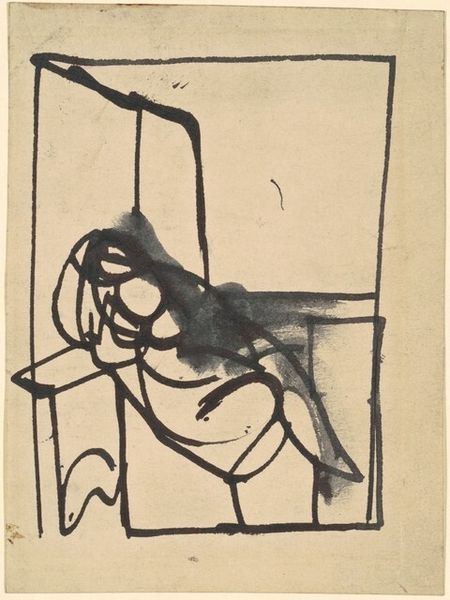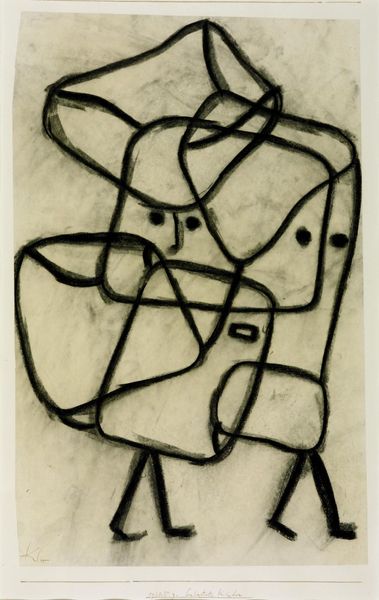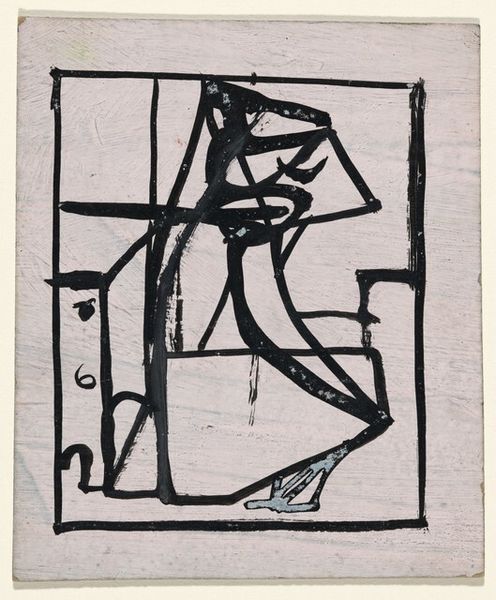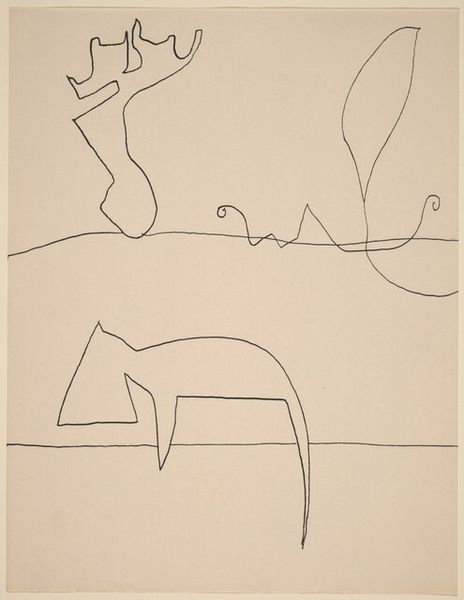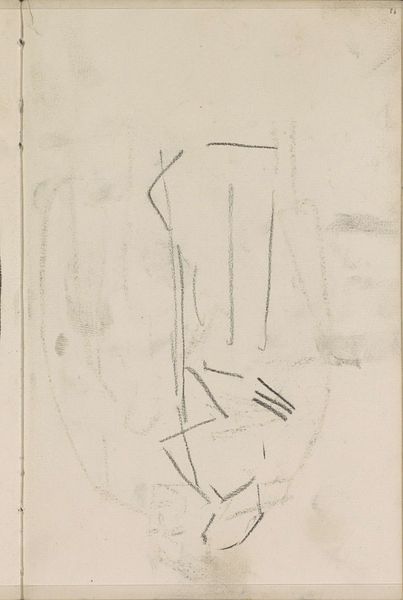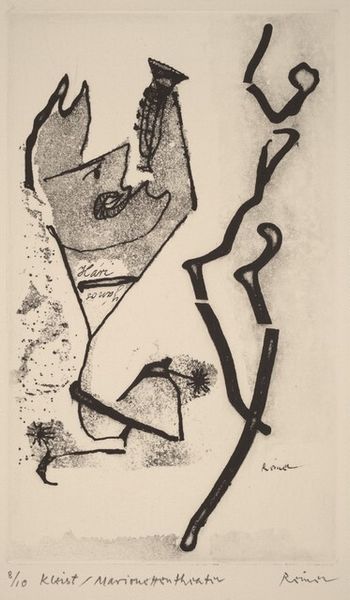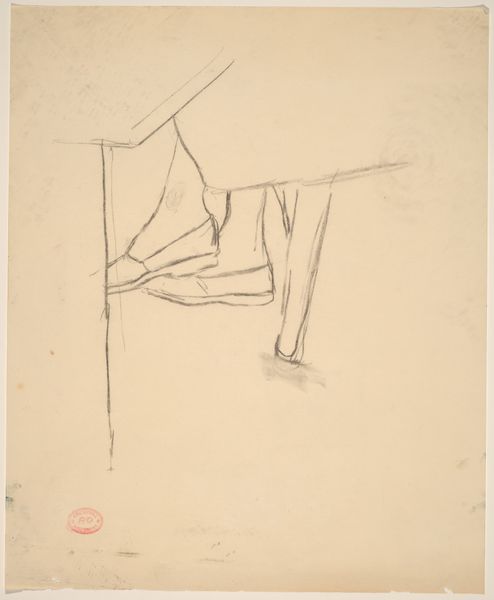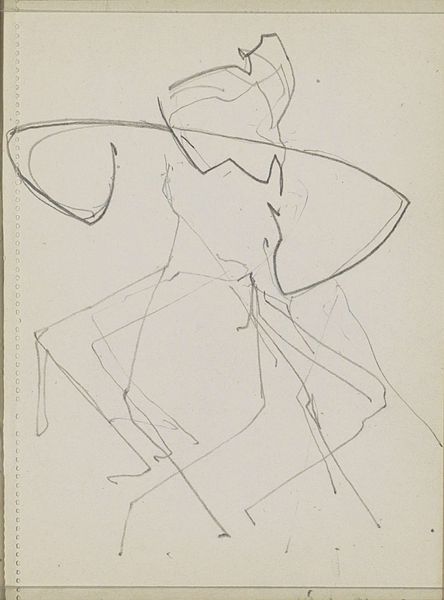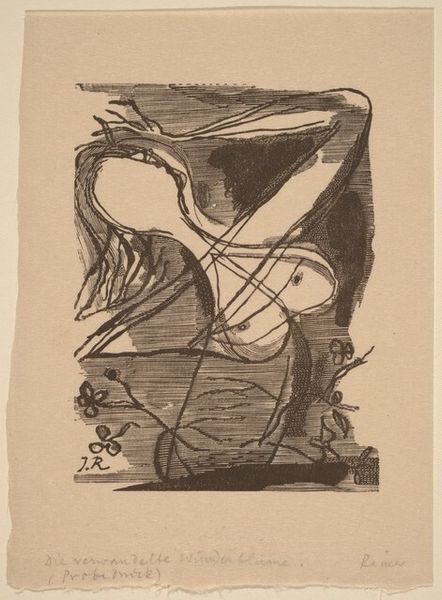
drawing, paper, ink
#
portrait
#
abstract-expressionism
#
drawing
#
ink painting
#
figuration
#
paper
#
ink
#
abstraction
Dimensions: overall: 26.7 x 17.2 cm (10 1/2 x 6 3/4 in.)
Copyright: National Gallery of Art: CC0 1.0
Curator: At first glance, Franz Kline's "Seated Figure," from circa 1950s, feels restless, doesn't it? A sort of anxious energy captured with a few deft strokes. Editor: Restless, perhaps, but look closer. What I find immediately compelling is Kline's control over what appears spontaneous. The density of the black ink against the paper is very striking; observe how these confident lines still adhere to conventions, like geometric patterns for a subject’s contours. Curator: Yes, but it's crucial to acknowledge Kline’s position in the Abstract Expressionist movement. These works weren't created in a vacuum, nor in service of replicating conventional geometric forms for forms’ sake; they arose from a specific cultural context, post-war America grappling with industrialization, where mass production started permeating every aspect of daily life. He translates the cacophony of urban environments into abstract compositions using an efficient production method akin to industrialization, and this is seen in the use of his raw materials like his tools and sumi ink on paper. Editor: And speaking of the medium, look at the deliberate application of ink—its viscosity and depth of color create incredible visual weight and drama, especially given the paper, where the lines can either suggest a person or not. Kline transforms everyday material into abstract images while capturing both subject and emotion on something rather transient like paper; this is all achieved in minimal gesture, something very specific to an ink-wash portrait, if we wish to name it. Curator: Absolutely. I’d emphasize, though, that Kline’s turn towards these simplified forms stems from his background in commercial illustration. How else can we explain such simple abstraction? His process was undoubtedly informed by these graphic methods of reproducible design, breaking away from art historical conventions, such as complex shading or coloring, instead favoring an iterative process which is accessible. Editor: So you’re arguing that Kline's style emerged as a direct response to, and maybe even an indictment of, commercial culture and modes of labor, yes? But let’s not dismiss the emotional register here. Doesn't this stark visual vocabulary of the figure, reduced to mere gesture and brushstrokes, communicate more effectively a post-war isolation than photorealistic images do? Curator: Yes! Both approaches provide insightful viewpoints to a seemingly simple figure, created during a very turbulent era. Editor: Precisely; it’s these inherent visual tensions which imbue the seated figure with such lasting impact, while providing a glimpse into both the figure and their environment.
Comments
No comments
Be the first to comment and join the conversation on the ultimate creative platform.
